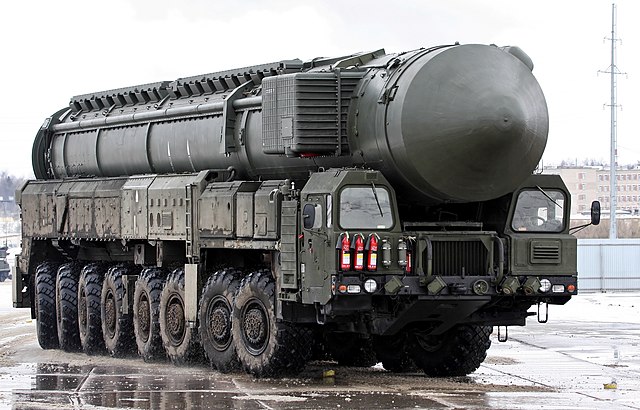
How does a missile shield work? Attacking missiles can be brought down in the boost phase, the midcourse phase, and the terminal phase. Each phase of the missile’s path requires a different method to bring it down.
A missile defense shield was first thought about in the Second World War. Germany had invented the V-2 rocket, which was the world’s first long range guided missile. They had a range of about 320 km and could reach speeds of 5,760 km/h. Nothing could stop them, and they were launched by the Nazis all over northern Europe, causing a lot of death and destruction. There was no way to stop them because nothing was fast enough. The only defense was to destroy their launch sites, which the allies did as fast as they could. Interestingly, Wernher von Braun, who designed the V-2 rocket, was captured by the Americans and put to work for NASA, where he designed the rocket that put Apollo 11 on the moon. The Americans were the first to create an anti-ballistic missile shield in the 1990s, and they built several launch sites across Europe. This was towards the end of the Cold War and Russia was still seen as a threat, hence the locations of the sites.
Missile shields are meant for intercontinental ballistic missiles (ICBM) and not smaller missiles. The worry is that a rogue state, such as North Korea, would launch a nuclear armed ICBM at the United States. An ICBM is basically a rocket full of fuel, explosives, and a guidance system. They have a range of over 5,500 km, although modern ICBMs can go much farther. Modern ICBMs can also carry several different rockets inside them. These can all be armed with a nuclear warhead and the main missile can release them once it has entered the target country and they can target several different cities at the same time.
So, how does a missile defense shield work? The basic idea is to hit the ICBM with another missile to destroy it in flight. The ICMB has to be targeted in one of its three phases. The first phase is the launch phase, and this is the most difficult time to shoot the rocket down. Part of the ICBM missile shield has to detect when a missile is fired. The launch phase of the missile only lasts about five minutes and detecting the missile being launched and getting a missile to hit it in those five minutes is all but impossible unless the ICBM is launched right next to a missile defense launch site.
Shooting it down in the midcourse phrase is the easiest and the most sensible choice. An ICBM flies at a speed of about 24,000 km/h and it flies in an arc that goes about 1,200 km outside of Earth’s atmosphere. Depending on the distance to the target, this part of the flight can take about 30 minutes and that gives the missile defense technology more time to plan, aim, and hit the target. The principle is simple. You have to be able to see where the missile is, work out its speed and where it is going, and then fire a missile to intercept it. The practice is not quite so simple. ICBMs carry a lot of countermeasures, such as frequency jammers and chaff. They can also release decoy missiles, which confuses the defense missile because it doesn’t know which missile to target. Modern missiles are also sometimes incased in a stainless-steel shroud of liquid oxygen to cool them and make them invisible to the missile’s infrared sensors. There have been several tests in this phase and some of them have been successful, but it is not easy to hit a target moving so quickly and more missiles miss than hit.
The last phase is the terminal phase. The ICBM reenters the atmosphere at over 3,000 km/h, diving towards its target. If the missile defense shield missed during the midcourse stage, this is the last chance, but this stage of the flight is only about 30 seconds. A defense missile needs to be released before the ICBM enters this phase and it needs to be fairly close to where the missile is. The chances of missing are very high and there are no second chances. Also, if the missile successfully hits the ICBM, it could spread radioactive material over a large area of the target country. This is not the best option.
The US has invested over $350 billion in research on ICBM shields and none of the systems so far work enough of the time to really be a shield. Some ideas currently being worked on are space based shields that could target the ICBM once it left Earth’s atmosphere. The distance to the missile would be less and it might have a higher success rate. Some people are also considering lasers. Modern lasers are more powerful and they obviously travel at the speed of light, so a laser could be trained on a moving ICBM. The trouble is, the laser would have to track the missile because it would take a while for the laser to transfer enough energy to destroy the missile. There are some mirrors that can reflect some lasers, so defensive measures might be possible. However, the biggest problem with a laser is that the weather would get in the way. Water in clouds could absorb some of the laser. Still, with the amount of money being used for research, who knows what they will come up with. And this is what I learned today.
Image By Vitaly V. Kuzmin – http://vitalykuzmin.net/?q=node/446, CC BY-SA 4.0, https://commons.wikimedia.org/w/index.php?curid=19003170
Sources
https://www.heritage.org/military-strength/assessment-us-military-power/missile-defense
https://en.wikipedia.org/wiki/Anti-ballistic_missile
https://science.howstuffworks.com/missile-defense.htm
https://www.ucsusa.org/resources/how-does-missile-defense-work
https://en.wikipedia.org/wiki/V-2_rocket
https://en.wikipedia.org/wiki/Wernher_von_Braun
https://en.wikipedia.org/wiki/Intercontinental_ballistic_missile
